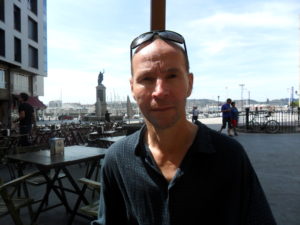By Andrew Milner and Halima Mahomed

 ‘Development can be seen as expanding the real freedoms that people enjoy,’ wrote Amartya Sen. However, it seldom has. Instead, development has been reduced to much more easily identifiable numbers and targets. Nowhere is this more apparent than in Africa. Institutional philanthropy, which could potentially play a significant part in enabling the space for local power and agency to set the agenda, has failed to do so mainly because the way it is currently practised fails to account for, or at times sets up barriers against, local power and agency.
‘Development can be seen as expanding the real freedoms that people enjoy,’ wrote Amartya Sen. However, it seldom has. Instead, development has been reduced to much more easily identifiable numbers and targets. Nowhere is this more apparent than in Africa. Institutional philanthropy, which could potentially play a significant part in enabling the space for local power and agency to set the agenda, has failed to do so mainly because the way it is currently practised fails to account for, or at times sets up barriers against, local power and agency.
Even when its declared purpose is to advance social change, too often, institutional philanthropy proceeds from a set of assumptions, which run very broadly like this: donors give, NGOs, communities, etc receive and the power lies in the gift. With that power is held (unconsciously or not), the ability to frame the parameters of the issues that need to be addressed. While at times there are alignments between these framings and the choices organically made by civil society, there are several reasons – apart from questions of principle – why this needs further attention. Some of these were highlighted in a series of conversations on the issues hosted by the Ford and Mott Foundations in South Africa and PSJP, a full report of which can be found here. Though these conversations had Southern Africa as their focus, they have a wider resonance, as readers will appreciate.
In Southern Africa, many donors have often taken a narrow view of who merits support and have used the power their resources give them to create a select pool of recipients. As a result, the report notes, civil society has often come to mean formal NGOs. As Hala -al Khalib, who, talking about the women’s movement in Africa, notes: ‘The civil space in the Horn of Africa is now fully occupied by NGOs…’ The problem with ‘this NGO-isation is that it is too often at the mercy of the imagination, assumptions and interests of Northern funding institutions and their surrogates.’ Because they are the ones who are funded, these ‘select’ NGOs have come to be seen as the only ones with legitimacy. It’s a vicious circle – a large portion of Northern funding goes to institutionalized civil society. These institutions thereby become seen as ‘legitimate’. Funding then only goes to “legitimate” NGOs, ….and so on. As one participant put it, this has ‘directly and indirectly minimised space for alternative voices and views’. Another participant called this the ‘power of depoliticizing movements for change’.
While the NGO space is varied and there are several that operate in solidarity with broader civic action, this vicious circle has informed philanthropy’s view of what needs to change and how, leading to the exclusion of alternative viewpoints and consequent narrowing of debate. Many of these NGOs often operate in ways that are not connected enough to, or unable to engage appropriately with, the broader civic space – the local organising in communities and social movements where much of the impetus for change now lies. For many donors, these are often seen as not sufficiently institutional, influential or organised to create change and therefore too risky to support. Many donors even struggle just to engage with them. As one participant noted, ‘there is almost no space for alternative civil society formations and mechanisms to influence philanthropy.’
And yet….
And yet, as one participant pointed out, this is precisely the area that needs philanthropy: ‘The alternative is not going to come from us here in this room.’ Means of action like local organizing and movements (local or not) are where things are happening and, if it’s serious about change, philanthropy needs to support and strengthen spaces for these to happen.
The paradox of power
Central to all this is the question of power. Not only does the power lie with the funder to award or withhold funds but through that, to determine what ‘big issues’ are seen as important in the first place – ‘civil society is invited into a space that is already delineated.’ It has limited power to negotiate on the larger parameters and is often faced with hard choices of amending or adding to program work in order to meet donors’ programmatic requirements or saying no to the money. It is rarely a clear cut or easy decision. A corollary of this, identified by the South Africa conversations, is that accountability is too limited and too responsive to donor requirements. Donors might be accountable to their peers or to their boards but are seldom accountable to civil society. On the other hand, donors demand accountability from their grantees, always on their terms. While donor accountability in theory should not prevent civil society from also being accountable to recipients, the critique is that many civil society organizations prioritise upward donor accountability; and this needs to be addressed.
The power of funders is widely acknowledged. How many conferences have you been to where the issue of power and the unhealthy relationship between donors and recipients it gives rise to is not talked about? However, discussions seldom lead to any resolution, and while the euphemistic language sometimes used helps to mask it, there is much scepticism: ‘A lot of donors don’t just call themselves donors – they say they are partners or capacity-builders – and what this does is hide power.’
Paradoxically, though, in at least two ways, this power acts as an impediment to donors’ intentions as much as a means for them to get their way. First, it’s almost a truism to say that the people affected know best about how to solve the problems that beset them and that local groups are the real locus of community knowledge and action. However, the channelling of funds primarily to or through a circle of familiar NGOs – who are asked to design programs on behalf of those they serve and account for that back to the donors – sets up barriers that remove power and agency from those groups. In short, while in theory donors know the importance of local power, in reality, their own practice stifles it.
Second, funders know that their resources confer authority, but the need to maintain the perception of that authority can shackle them to a worldview which is incomplete or out of date. As one donor participant to the conversations conceded: ‘We cannot acknowledge that we do not know; that’s deeply connected to our power.’
In other words, donors can be as much the victims of the power they wield as those who are excluded from their support. So how can philanthropy use its power in a way that doesn’t stifle the power and agency of its constituents? How can it create and support solidarity and dignity, rather than creating a different form of elite?
Democratising philanthropy
A number of steps were identified by the South Africa conversations and these are supplemented here with other observations from the field. The real onus is on the donors to show commitment to taking this forward. Donors at the meeting were challenged to ‘walk the talk’, to show the commitment in action by engaging in a different kind of philanthropy in which power lies in the hands of civic actors. A first step might be to broaden the circle of donors involved in discussing this topic. Others include actively creating spaces for a broader range of civic actors to determine their own agendas and then to be able to engage – and even disagree – with donors and creating feedback loops for civic actors to shape philanthropic strategies. The encouragement of more research and debate on alternative conceptions and practices of philanthropy was also raised (participants noted in this connection in South Africa, for instance, the existence of the new Centre for African Philanthropy and Social Investment (CAPSI) at Wits Business School and work at the UKZN Centre for Civil Society.
Another means which is increasingly being put to the test and finding support is participatory grantmaking. A growing number have adopted or are developing this approach. Some of these – UHAI- EASHRI, ISDAO, International Trans Fund, Red Umbrella Fund – are listed in a recent Alliance article. There is also a corresponding increase in the literature on the practice, with studies commissioned by a number of foundations, Ford among them, and a GrantCraft guide.
Or funders might consider setting up funds specifically aimed at supporting local organizing and movements as a principle (not just as a means to advance an issue). Writing in a recent edition of Nonprofit Quarterly, Olivia Roanhorse cites the Northwest Area Foundation which (following an evaluation last year) devotes 40 per cent of its new grant funds to Native-led organisations in the US. Internally, donors might consider radically diversifying their board, advisory committees and staff so their make-up better reflects the constituencies they are professing to help.
None of these steps is staggeringly new. None of them is easy, yet, all of them, to a greater or lesser extent can be taken. The means are there, but these need to be matched by the will. As the South African conversations made clear, any approach which leaves intact the nature of institutional philanthropy is unlikely to succeed. It’s not added extras that are required but a fundamental reform of the whole system. The real question is, how do you do this within that system – even one that claims it is committed to change?
Andrew Milner is a freelance writer, researcher and editor specializing in the areas of philanthropy and civil society. He is a consultant to Philanthropy for Social Justice and Peace. He is also a regular contributor to, and associate editor of, Alliance magazine.